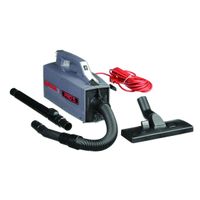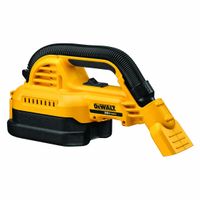Call +(254) 703 030 000 / 751 483 999 / 721 704 777
- Home
- Cleaning And Janitorial
- Floor Cleaning Machines
- Vacuum Cleaners Accessories
- Handheld Vacuums
.....Read More
Frequently Asked Questions
What are the best handheld vacuums for cleaning stairs?
1. **Dyson V7 Trigger**: Known for its powerful suction and fade-free battery life, the Dyson V7 Trigger is excellent for stairs. It features a mini motorized tool that effectively removes pet hair and ground-in dirt.
2. **Shark UltraCyclone Pet Pro+**: This model is designed for pet owners, with a motorized self-cleaning brush that prevents hair wrap. Its lightweight design and strong suction make it ideal for stairs.
3. **Black+Decker Dustbuster AdvancedClean+**: With a rotating slim nozzle and strong suction, this vacuum is versatile and effective for cleaning stairs. Its long battery life and easy-to-empty dustbin add to its convenience.
4. **Bissell Pet Hair Eraser Lithium-Ion**: Specifically designed for pet hair, this vacuum comes with specialized tools like a motorized brush tool and upholstery tool, making it perfect for stairs.
5. **Hoover ONEPWR Cordless Hand Vacuum**: Part of Hoover's ONEPWR system, this vacuum offers powerful suction and a compact design. Its removable, rechargeable battery provides extended cleaning time.
6. **Eufy HomeVac H11**: This ultra-lightweight vacuum is easy to maneuver on stairs. It offers decent suction power and a sleek design, making it a good choice for quick clean-ups.
7. **Tineco A11 Hero**: Although primarily a stick vacuum, it converts into a handheld vacuum, offering powerful suction and a range of attachments suitable for stairs.
8. **Ryobi P7131**: Part of the ONE+ system, this vacuum is compatible with Ryobi's 18V batteries. It features a crevice tool and a dust brush, making it versatile for stair cleaning.
9. **Dirt Devil Scorpion**: Known for its affordability and strong suction, this corded vacuum is great for quick clean-ups on stairs. Its long power cord provides extended reach.
10. **Milwaukee M12 Compact Vacuum**: This compact vacuum is part of Milwaukee's M12 system, offering strong suction and a crevice tool, ideal for detailed stair cleaning.
How do handheld vacuums compare to full-size vacuums for car interiors?
Handheld vacuums and full-size vacuums each have distinct advantages and limitations when it comes to cleaning car interiors.
Handheld vacuums are compact, lightweight, and portable, making them ideal for maneuvering in the tight spaces of a car interior. They are designed for quick clean-ups and can easily reach under seats, between crevices, and into other hard-to-reach areas. Many handheld models are cordless, offering greater flexibility and ease of use without the hassle of a power cord. They often come with specialized attachments like crevice tools and brushes that enhance their effectiveness in cleaning car interiors. However, handheld vacuums typically have smaller dust capacities and may require frequent emptying. Their battery life can also be limited, necessitating recharges during extended cleaning sessions.
Full-size vacuums, on the other hand, generally offer more powerful suction and larger dust capacities, making them suitable for more thorough cleaning tasks. They can handle larger debris and more extensive dirt accumulation, which is beneficial for heavily soiled car interiors. Full-size models often come with a variety of attachments that can be used for detailed cleaning. However, their bulkier size and the need for a power outlet can make them less convenient for car cleaning. They may struggle to reach tight spaces and require more effort to maneuver inside a vehicle.
In summary, handheld vacuums are more convenient and practical for regular maintenance and quick clean-ups of car interiors, while full-size vacuums are better suited for deep cleaning tasks. The choice between the two depends on the specific cleaning needs, frequency of use, and personal preferences regarding convenience and cleaning power.
Are bagless handheld vacuums better than those with bags?
Bagless handheld vacuums and those with bags each have their own advantages and disadvantages, and whether one is better than the other depends on individual preferences and needs.
Bagless handheld vacuums are often favored for their convenience and cost-effectiveness. They eliminate the need to purchase replacement bags, which can save money over time. The clear dust containers allow users to see when the vacuum needs to be emptied, ensuring optimal performance. Additionally, bagless models are generally more environmentally friendly, as they reduce waste associated with disposable bags. However, emptying the dust container can release dust and allergens back into the air, which may not be ideal for allergy sufferers.
On the other hand, handheld vacuums with bags are typically better at containing dust and allergens, as the bags act as an additional filter. This makes them a preferable choice for those with allergies or respiratory issues. Bagged models often require less frequent maintenance, as the bags can hold more debris than the dust containers of bagless models. However, the ongoing cost of purchasing replacement bags and the environmental impact of disposing of them are potential downsides.
In terms of performance, both types can be equally effective, but bagged vacuums may maintain suction power better as the bag fills, compared to some bagless models where performance can diminish as the dust container fills up.
Ultimately, the choice between bagless and bagged handheld vacuums depends on personal priorities, such as cost, convenience, environmental concerns, and health considerations.
How long does the battery last on a typical handheld vacuum?
The battery life of a typical handheld vacuum varies depending on the model, brand, and battery type. Generally, most handheld vacuums are equipped with lithium-ion batteries, which are known for their efficiency and longer lifespan compared to older nickel-cadmium batteries.
On average, a handheld vacuum can run anywhere from 15 to 40 minutes on a full charge. Entry-level models might offer around 15 to 20 minutes of continuous use, which is usually sufficient for quick clean-ups or spot cleaning. Mid-range models typically provide 20 to 30 minutes of runtime, balancing power and battery life for more extensive cleaning tasks. High-end models, often equipped with more powerful motors and larger batteries, can last up to 40 minutes or more.
Charging times also vary, with most handheld vacuums requiring 2 to 4 hours to fully recharge. Some advanced models feature fast-charging capabilities, reducing the downtime between uses.
Factors such as the power setting used, the type of surface being cleaned, and the age of the battery can affect the actual runtime. Using a vacuum on a higher power setting or on dense surfaces like carpets can drain the battery faster. Over time, the battery's capacity may diminish, leading to shorter runtimes.
In summary, while the typical handheld vacuum offers 15 to 40 minutes of battery life, the specific duration depends on the model and usage conditions. For optimal performance, it's advisable to choose a vacuum that aligns with your cleaning needs and to follow the manufacturer's guidelines for battery maintenance.
What features should I look for in a handheld vacuum for upholstery?
When selecting a handheld vacuum for upholstery, consider the following features:
1. **Suction Power**: Look for a vacuum with strong suction to effectively remove dirt, dust, and pet hair from fabric surfaces.
2. **Attachments**: Ensure it includes specialized attachments like a motorized brush, crevice tool, and upholstery tool for versatile cleaning.
3. **Portability and Weight**: Choose a lightweight model for easy maneuverability and to prevent arm fatigue during extended use.
4. **Battery Life**: Opt for a model with a long-lasting battery, ideally with a runtime of at least 20-30 minutes, to complete cleaning tasks without frequent recharging.
5. **Charging Time**: Consider the charging time; faster charging models are more convenient for frequent use.
6. **Dust Capacity**: A larger dustbin reduces the frequency of emptying, but ensure it’s easy to detach and clean.
7. **Filtration System**: A good filtration system, such as HEPA filters, is essential for trapping allergens and ensuring clean air output.
8. **Noise Level**: A quieter model is preferable for a more pleasant cleaning experience.
9. **Build Quality and Durability**: Look for a vacuum made from high-quality materials to ensure longevity.
10. **Ease of Use**: Features like an ergonomic handle, easy-to-reach controls, and simple maintenance enhance user experience.
11. **Brand Reputation and Reviews**: Consider models from reputable brands with positive customer reviews for reliability and performance.
12. **Price and Warranty**: Ensure it fits your budget and comes with a warranty for peace of mind.
13. **Versatility**: Some models offer wet/dry capabilities, which can be useful for cleaning spills on upholstery.
By focusing on these features, you can find a handheld vacuum that effectively meets your upholstery cleaning needs.
Can handheld vacuums effectively clean pet hair from furniture?
Yes, handheld vacuums can effectively clean pet hair from furniture, but their effectiveness depends on several factors.
Firstly, the suction power of the handheld vacuum is crucial. Models with strong suction can lift pet hair embedded in fabric fibers more efficiently. Look for vacuums with high wattage or those specifically designed for pet hair removal.
Secondly, the type of attachment or brush is important. Many handheld vacuums come with specialized pet hair attachments, such as motorized brushes or rubber nozzles, which can agitate and lift hair from upholstery more effectively than standard nozzles.
The design and weight of the vacuum also play a role. Lightweight and ergonomically designed models are easier to maneuver around furniture, allowing for more thorough cleaning. Cordless models offer greater flexibility and reach, especially for cleaning hard-to-access areas.
Battery life is another consideration for cordless handheld vacuums. A longer battery life ensures you can clean larger areas without frequent recharging interruptions.
Additionally, the vacuum's filtration system is important, especially for allergy sufferers. HEPA filters can trap allergens and prevent them from being released back into the air.
While handheld vacuums are effective for quick clean-ups and maintaining pet hair on furniture, they may not replace the deep cleaning capabilities of full-sized vacuums. For best results, regular use of a handheld vacuum in conjunction with periodic deep cleaning using a full-sized vacuum or professional cleaning service is recommended.
In summary, handheld vacuums can be effective for cleaning pet hair from furniture if they have strong suction, appropriate attachments, and good design features. However, their effectiveness is maximized when used as part of a comprehensive cleaning routine.
How do I maintain and clean a handheld vacuum?
1. **Unplug and Disassemble**: Ensure the vacuum is turned off and unplugged. Remove any detachable parts like the dust container, filters, and attachments.
2. **Empty the Dust Container**: Dispose of the collected debris in the dust container. Rinse it with warm, soapy water if it's washable. Ensure it is completely dry before reassembling.
3. **Clean or Replace Filters**: Check the manufacturer’s instructions for filter maintenance. Washable filters should be rinsed with water and air-dried thoroughly. Replace non-washable filters as recommended.
4. **Check for Blockages**: Inspect the nozzle, hose, and attachments for any blockages. Use a long, thin object to gently remove any debris.
5. **Wipe the Exterior**: Use a damp cloth to wipe down the vacuum’s exterior, including the handle and body. Avoid using harsh chemicals that might damage the surface.
6. **Clean Attachments**: Wash any removable attachments with warm, soapy water. Rinse and dry them completely before reattaching.
7. **Inspect the Brush Roll**: If your vacuum has a brush roll, remove any hair or fibers wrapped around it. Use scissors to cut away tangled debris carefully.
8. **Check the Battery**: For cordless models, ensure the battery is charged and functioning properly. Clean the battery contacts with a dry cloth to ensure a good connection.
9. **Reassemble**: Once all parts are clean and dry, reassemble the vacuum. Ensure all components are securely attached.
10. **Regular Maintenance**: Perform these cleaning steps regularly, depending on usage frequency, to maintain optimal performance. Store the vacuum in a dry place to prevent moisture damage.

